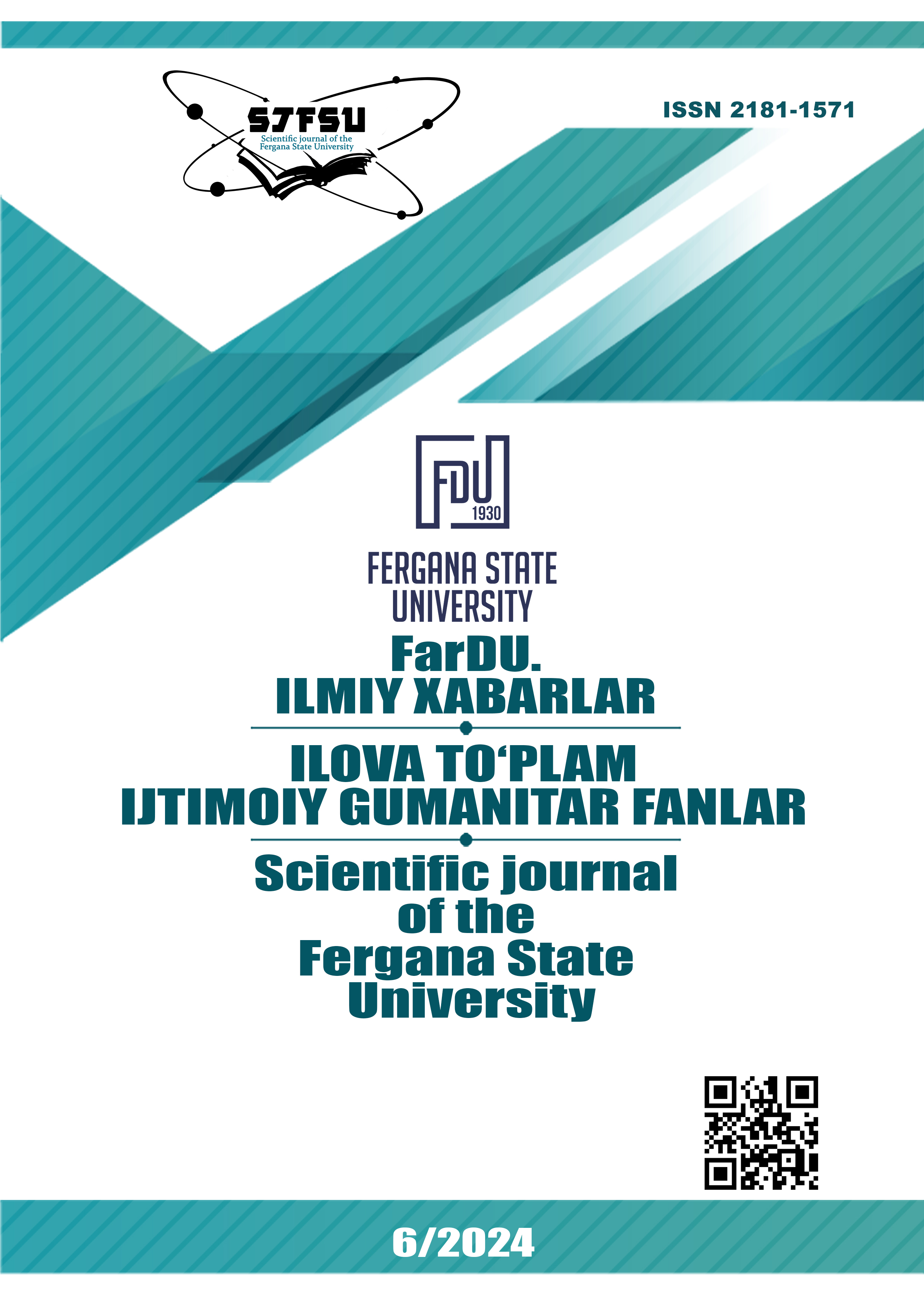A LINGUOCULTURAL STUDY OF THE GERMAN LEXICAL UNIT TAUFEN (BAPTISM)
Keywords:
baptism, Christianity, Orthodoxy, Catholicism, Protestantism, religious practice, symbolic meaning, social significance, spiritual renewal.Abstract
This article focuses on the linguo-cultural analysis of “baptism” rituals in the German language, shedding light on their historical, religious, and social significance. Baptism, as one of the oldest Christian practices, symbolizes the spiritual union between humans and God. The article examines the Jewish roots of baptism and its establishment as a religious practice by Jesus. Drawing on studies by German linguists, it explores the historical development, symbolic meanings, and practical variations of baptism across different Christian denominations.
The analysis highlights variations in practices: full immersion in Orthodox traditions, sprinkling or anointing the forehead with water in Catholicism, and emphasizing spiritual cleansing in Protestantism. Symbols such as water, white garments, the cross, and candles are interpreted for their religious and social importance. Today, baptism is noted not only as a religious rite but also as a significant social event. The differences between denominations, the role of baptism in social cohesion, and its modern reinterpretations suggest the need for further in-depth studies.
References
Joachim Jeremiasning. Die Kindertaufe in den ersten vier
Jahrhunderten. Schneider Verlag. – 2009. – S.209.
Karl Barthning. Die kirchliche Dogmatik, Band IV/4: Die Lehre von der Taufe. Berlin. Langenscheidt. –1967. – S. 304.
Hans Kung “Christentum – Wesen und Geschichte. Berlin. Langenscheidt. – 1994. –S.206.
Friedrich Schleiermacher. Über die Taufe. Berlin. Langenscheidt. –1987.-S. 146.
Arnold Angenendt. Taufe und Taufriten: Ursprung und Bedeutung in der Geschichte. Ernst Klett Sprachen GmbH, Stuttgart. – 2004. – S.176.
Downloads
Published
Issue
Section
License
Copyright (c) 2025 Scientific journal of the Fergana State University

This work is licensed under a Creative Commons Attribution-NonCommercial-NoDerivatives 4.0 International License.
How to Cite
Most read articles by the same author(s)
- , , , , , SYNTHESIS AND STUDY OF THE COMPLEX COMPOUND OF N-(1H-1,2,4-TRIAZOL-YL) ACETAMIDE WITH ZINC (II) CHLORIDE , Scientific journal of the Fergana State University: No. 2 (2025): FarDU ilmiy xabarlari jurnali (Tabiiy fanlar)
- Raximov Quvvatali Ortikovich, Mamatova Zilola Xabibulloxonovna, Tazhikenova Nurzhanar Kabikenkizi, COMMON PHISHING ATTACKS IN KAZAKHSTAN AND WAYS TO PROTECT CITIZENS FROM INTERNET SCAMMERS , Scientific journal of the Fergana State University: No. 3 (2024): FarDU.Ilmiy xabarlar jurnali (Aniq va tabiiy fanlar)
- , , METHODS OF FORMATION OF LOGICAL COMPETENCE IN STUDENTS , Scientific journal of the Fergana State University: No. 3 (2023): FarDU ilmiy xabarlari jurnali (Aniq va tabiiy fanlar)
- , , , , SYNTHESIS AND STUDY OF COMPLEX COMPOUNDS OF 3-AMINO 1,2,4-TRIAZOLE WITH SALTS OF Co (II), Ni (II) AND Cu (II) , Scientific journal of the Fergana State University: No. 3 (2023): FarDU ilmiy xabarlari jurnali (Aniq va tabiiy fanlar)
- , CUSTOMS WHICH ARE CARRIED OUT BEFORE THE WEDDING, ON THE DAY OF THE WEDDING AND AFTER THE WEDDING IN UZBEK AND GERMAN PEOPLE , Scientific journal of the Fergana State University: No. 6 (2023): FarDU ilmiy xabarlari jurnali (Ijtimoy gumanitar fanlar)
- , , TECHNOLOGICAL APPROACH IN IMPROVING THE METHODOLOGY OF GENDER CULTURE DEVELOPMENT OF FUTURE FOREIGN LANGUAGE TEACHERS , Scientific journal of the Fergana State University: No. 4 (2024): Scientific journal of the Fergana State University (Social humanities sciences)
- , EFFECTIVE USE OF EDUCATIONAL TECHNOLOGIES IN THE DEVELOPMENT OF CREATIVE COMPETENCE OF STUDENTS , Scientific journal of the Fergana State University: No. 4 (2024): Scientific journal of the Fergana State University (Social humanities sciences)
- , INTERPRETATION OF THE TRANSLATION OF THE WORK "TARIKH-I-RASHIDI" INTO THE MODERN UZBEK LITERARY LANGUAGE , Scientific journal of the Fergana State University: No. 5 (2024): Scientific journal of the Fergana State University (Social humanities sciences)
- , DEGREE OF STUDY OF THE CATEGORY AUTHORIZATION AT TEXT LEVEL , Scientific journal of the Fergana State University: No. 3 (2024): Scientific journal of the Fergana State University. Application set (Social humanities sciences)
- Faxriddin Xolboyev , Fotima Shodiyeva , Zilola Mirxonova , FOOD COMPOSITION AND MASS VARIABILITY OF THE STOMACH OF THE GENUS MEROPS IN UZBEKISTAN , Scientific journal of the Fergana State University: No. 1 (2022): Scientific journal of the Fergana State University

